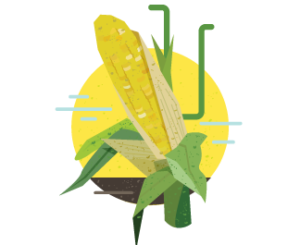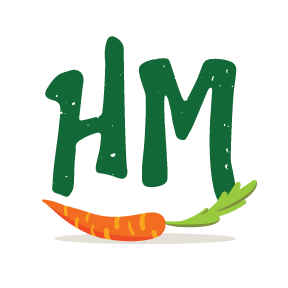Here you will find a toolkit for sourcing into the program and a complete listing of regional produce aggregators and food hubs. Farms interested in growing for the Harvest of the Month program will also be encouraged to list with us as a source of potential local food for distributors and aggregators. This page is open and available to all distributors sourcing local foods for Illinois child feeding sites.
Are you an Illinois producer, food hub or processor? Contact us at to join the Network and share your information!
Illinois Market Maker
Join the online MarketMaker platform that connects local farmers to distribution, packing facilities, processers and buyers. Check out all of the benefits for your distribution business here.
Locating Farms:
To find local and regional farms with details on products, certifications (GAP, Organic, etc.) and contact info, visit these websites:
Illinois Specialty Crop Growers Association
National Sustainable Ag Coalition Guide to Finding Local Food
USDA Local Food Directories- The National Farmers Market Directory
IFSN Member Producers and Processors:
Products offered: High quality, locally grown and milled organic and transitional grains. For commercial/institutional customers distributed through Central Baking Supplies in Chicago. Online ordering for residential customers.
Products Offered: May- Spring Garlic! Celebrate Spring with a fresh Spring garlic! Looks like a green onion, but with an undeniably garlicky flavor. Delivery options: You can pick up at our farm or we can deliver to you based on your location.
Pasture Grazed Sustainable Meats
Local beef and pork bundles and whole animal/ partial animal purchases. Our local beef is pasture-raised and grain-finished, our pigs are raised outdoors with no added hormones. Delivery based on location.
Bronkberry boasts a 70 x 30’ barn & “state of the art” greenhouse with quality flowers & vegetable plants. We are growing vegetables and fruit including asparagus, sweet corn & over 800 apple trees on 25+ acres. We WILL be producing apples in the 2020 season for “U pick”. We have a field trip program which includes special needs kids, and a Farm Lab program experience which typically includes education and a Farm Tour (visit the apple trees, vegetable garden, barnyard animals, greenhouse).
Cahokia Rice is located in McClure, IL. Named in honor of the Cahokia Tribe of Native American Indians. Cahokia Rice is a locally grown, non-GMO crop that is naturally higher in protein. Cahokia sells bulk 25 lbs. bags of both white and brown rice with free shipping.
At Star Farm in Chicago, we’re trying to make it easy for you to be more sustainable–whether that’s supporting local urban ag or letting us help you grow your own food and raise your own chickens right here in the city. Please enjoy our intentionally curated selection of vegetables, fruit, flowers, and medicine: all native, heirloom, unusual in color, high in nutrients and antioxidants, organic, and pollinator friendly.
Food Hubs:
View the Illinois Farm to school Network updated, complete list of local and regional food hubs with location and contact info.
Toolbox:
The program and the calendar
Illinois Harvest of the Month is an easy program that helps child feeding sites buy and serve more local food while teaching kids about healthy eating, nutrition, and agriculture. Each month, participating sites can feature a different local item on their cafeteria menus. This brings more money to local farmers and puts more nutritious food on student’s plates. Additionally, Harvest of the Month foods come with activities and resources for ways to increase education around that food.

Our seasonal calendar is available to all participating sites. The calendar is designed to follow the seasons in Illinois and can be used during a standard school year and during summer feeding. You can find the calendar on our homepage, in the right sidebar, or directly as a PDF here. Participating feeding sites are encouraged to feature an item from the 40 foods grown in Illinois but can substitute other local-source-identified produce or staples such as a dairy product, honey, grains or maple syrup (see below). This is a tool to help participants stay on track with the program and to aid in planning for menus and activities.
Participating Sites
In 2023 Harvest of the Month has been shared with more than 530,000 children at over 1100 feeding and garden sites in Illinois. To request a list of institutions utilizing Harvest of the Month in your sales area contact us at: Local Food in Schools (LFS) funding is available to all Illinois schools and child residential sites participating in the National School Lunch Program. The Harvest of the Month program assists these sites to utilize local foods purchased with LFS funds. Looking for a list of sites granted LFS funds? Click here.
Procurement and flexibility
Any food procurement is considered as local or regional (and therefore counts as participation in the Harvest of the Month program) if the food item is source identified as coming from Illinois, Indiana, Wisconsin, Michigan, Iowa, Minnesota, including Missouri and Kentucky for our southern and southwestern districts. Local, seasonal fruits and vegetables and staple items produced in our region, such as dairy, grains, honey, and dried beans can be procured through a variety of methods. Processed items must be healthy and “nearest to their natural form”.
An example: Potato Smiles or French fries are not a qualifying Harvest of the Month item, although frozen, cubed, minimally processed regional potatoes are considered a qualifying item. Schools decide the most efficient way to procure local and regional items in their area for Harvest of the Month.

In Jan. 2018, 954,721 lbs of storage apples were procured by just nine Illinois school districts! That’s just one month of Harvest of the Month purchases from these districts.
Monthly seasonal listings are based on seasonal and regional availability from Illinois, Indiana, Michigan, Wisconsin and Iowa Extension offices, and the Illinois Department of Ag. By choosing and promoting featured, seasonal selections each month, our school participants help to build up the market for local and regional produce. They also help farmers by utilizing items currently grown in this state and in the surrounding region. This allows our regional and local farmers to focus on growing more produce for wholesale so Illinois child feeding sites can order and procure easily.
Our website contains tools and information for many fruits, vegetables, and staples that are produced in the region. There is a variety of choices available when ordering regional and local produce. The form of produce to procure (fresh and minimally processed fresh, frozen, or dried produce) is determined by crop availability and by the constraints of each site’s kitchen facilities and staff. With the increase of fresh local ordering programs and local processing programs, there are a growing number of options for minimally processed fresh, frozen and dried vegetables and fruits in Illinois.
Searching for that perfect fit will require conversations with site food service managers, produce houses and aggregators in the region. By running a simple online search of local food aggregators and regional processors or food hubs you can begin to assess the availability of local and regional options in your area of the state.
Points to remember:
- When considering integrating these items into your distribution be sure to determine pricing, delivery, food safety, seasonal availability and quantities available. Every school has a unique set of restrictions and capacity.
- Confirm the origin of the primary fruits and vegetables in processed products. Secondary items, such as additional vegetables or minor recipe ingredients, which make up less than fifteen percent of the total product volume, may not be local or regional items. Understanding those volumes will help to determine if the product fits with a school’s goal of obtaining local or regional food.
- Local and regional foods are not like commercial food products sites get from their primary distributors. These products are fresher and are most likely processed clean without the use of sodium or additives. Shelf life and performance under hot and cold holding conditions may differ. These products may also have different yields than commercial products. Be sure to share this information with your school and feeding site customers.
Staying up-to-date
- The Illinois Harvest of the Month website is full of tips, tools, and resources. You’re already on it, how easy!
- Also, check out the Illinois Farm to School Network website, the National Farm to School Network website, and the Great Apple Crunch page.
- You can subscribe to the monthly Illinois Farm to School Network newsletter to learn more about resources, grants, local ag news, partnership opportunities and more. You will also receive invitations to future network webinars, local food meetings, and events. Sign up for the IFSN newsletter here.
- Any and all questions can be answered by emailing directly.

